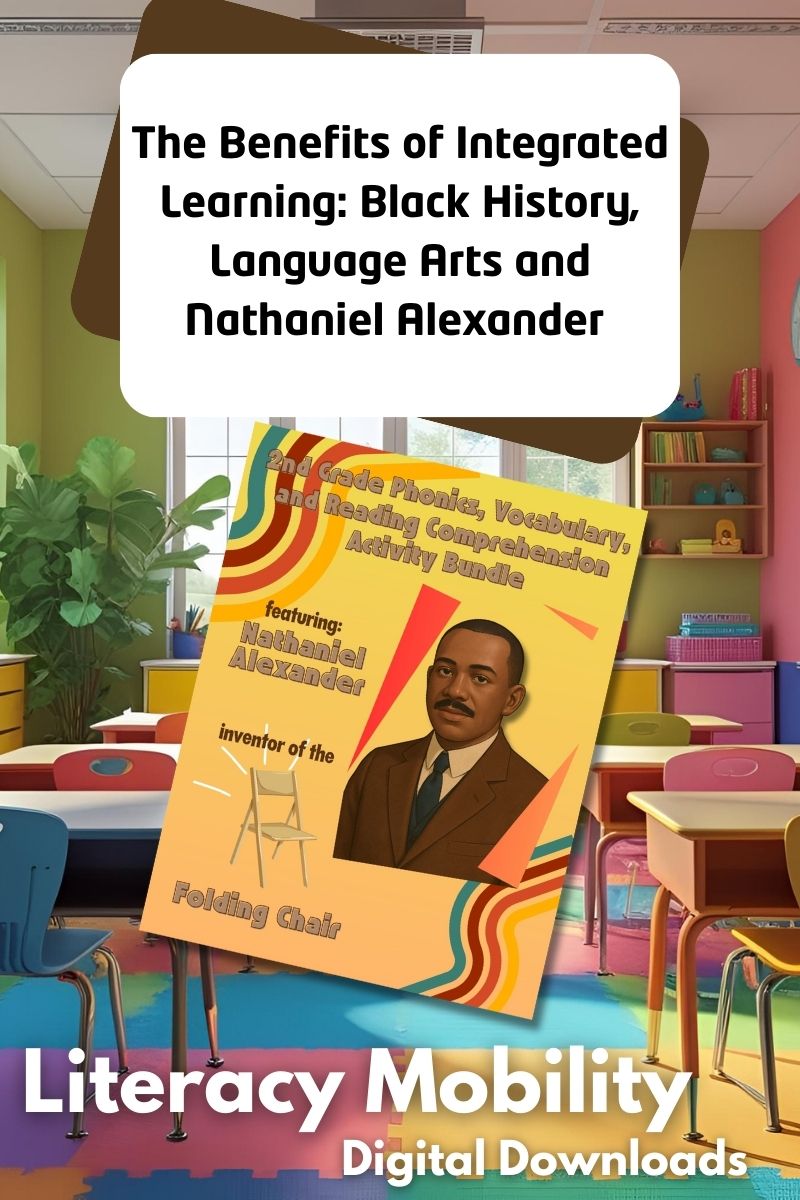
The Benefits of Integrated Learning: Black History, Language Arts and Nathaniel Alexander
Share
Are you looking for engaging ways to integrate essential language arts skills with meaningful historical content? Whether you're a homeschool parent or a classroom teacher, we all are looking for educational content that is interesting, holds its weight in academic value, and “sticks” with the student.
The Power of Integrated Learning: Black History Meets Language Arts
In the case of Literacy Mobility’s 2nd Grade Phonics, Vocabulary, and Reading Comprehension Activity featuring Nathaniel Alexander, one of the most compelling aspects is its commitment to teaching language arts alongside a celebration of African American history. Students learn about Nathaniel Alexander, the inventor of the folding chair, with phonics, vocabulary and reading comprehension integrated through-out. This integration means that history isn't just a separate subject; it becomes the very context for developing crucial literacy skills.
By exploring Nathaniel Alexander's story, children are encouraged to:
-
Understand how individual contributions have shaped our world.
-
Connect historical figures to tangible inventions they encounter in everyday life.
-
Engage with diverse narratives, enriching their understanding of history while simultaneously building their reading proficiency.
This approach allows history to feel more immediate and relevant, making learning a more profound and memorable experience.
How Children Master Phonics, Vocabulary, and Reading Comprehension
This activity bundle targets three core areas of language arts, providing structured yet interactive ways for children to grow:
-
Phonics: The activities are designed "to teach students the relationship between letters and sounds, enabling them to decode words accurately and efficiently". Students will work with a "Phonics Decoder Reading Passage" that focuses on short /a/ sounds (as in "had," "plan," "man," "drag," "flag," "that"), long /a/ sounds (made with 'a' and 'a_e'), and the /air/ sound (made with 'air,' 'are,' 'ear,' 'ere'). This direct instruction helps children "decode longer words [and] understand how word parts contribute to meaning".
-
Vocabulary: Expanding word knowledge is a central goal, enabling students "to understand increasingly complex texts". The "Nathaniel’s Folding Chair Vocabulary" section introduces words such as "special," "idea," "fuss," "clever," "plan," "struggle," "bright," "comfort," and "heavy". Students are encouraged to "use context clues to infer meaning or learn the meaning of new words", strengthening their comprehension as they encounter new lexicon.
-
Reading Comprehension: The bundle aims "to teach students active strategies to construct meaning from text, both narrative and informational". Through the "Nathaniel Alexander Reading Comprehension" section, children read a passage detailing his invention and then answer fundamental questions like "WHO?" (Nathaniel Alexander), "WHAT?" (Invented the folding chair), "WHEN?" (a long time ago), and "WHY?" (because people needed extra chairs that were easy to carry). A key encouragement for students is to "think about their thinking as they read," fostering metacognition and deeper understanding.
Fostering Growth Through Diverse Learning Activities
Beyond direct instruction, the bundle utilizes a variety of activity types to cater to different learning styles and keep students engaged. This diverse approach helps foster growth by providing multiple pathways to understanding:
-
Reading Passages: Students engage with a "Phonics Decoder Reading Passage" presented as a poem about Nathaniel's folding chair.
-
Interactive Exercises: Activities include writing words with specific sounds, circling letter combinations, and matching vocabulary words to their definitions.
-
Hands-on Elements: The reading comprehension activity encourages students to "cut out the answers below and pasting them on the question," which provides a tactile way to summarize information.
-
Creative Expression: The inclusion of "Color the picture!" instructions for both the phonics and vocabulary sections adds a visual and artistic component, making learning more enjoyable.
By integrating the vital story of Nathaniel Alexander with a robust language arts curriculum, this activity bundle creates a rich, multidisciplinary learning experience. It's an excellent way for students to decode words, expand their vocabulary, comprehend texts, and appreciate a significant piece of history, all within a coherent and engaging framework.